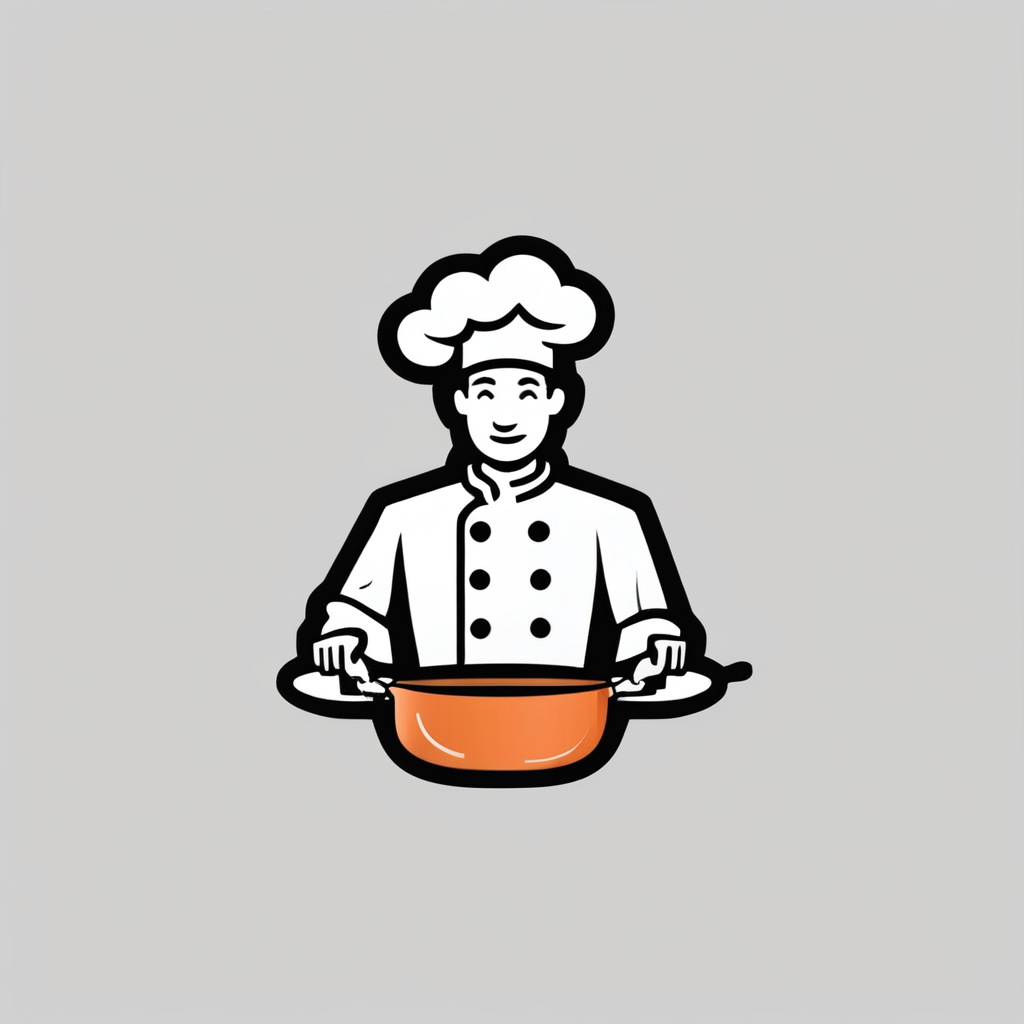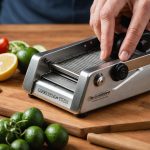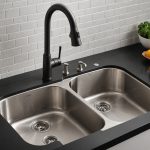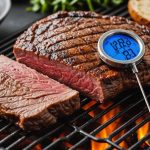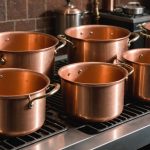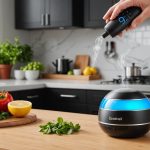Overview of Commercial Kitchen Equipment
Understanding commercial kitchen equipment is vital for anyone operating in the food service industry. This equipment includes a range of tools crucial for efficient kitchen operations, spanning from cooking stoves to refrigeration units. Each piece serves an essential role in maintaining a seamless workflow, ensuring that chefs and staff can prepare, cook, and store food effectively.
In the UK, the market for commercial kitchen equipment is both expansive and competitive, reflecting the diverse demands of restaurants, cafes, and catering services. Businesses focus on UK savings by investing in high-quality equipment to maximise efficiency and minimise downtime. As the industry experiences technological advancements, there is an increasing emphasis on top-tier equipment known for durability and performance.
This might interest you : Ultimate guide to maintaining your ceramic kitchen tiles in uk homes: expert tips & tricks
The current trends in equipment usage highlight a shift towards energy-efficient and multi-functional tools. Operators seek solutions that not only meet their immediate needs but also offer long-term savings and environmental benefits. By prioritising equipment that reduces energy consumption, businesses can lower operational costs while contributing to sustainability.
Operators must stay informed about these trends and make strategic investments in top-tier equipment to ensure their kitchens meet evolving industry standards and consumer expectations.
Also to see : Designing a dreamy breakfast nook: chic inspirations for your ideal uk kitchen
Key Categories of Commercial Kitchen Equipment
Understanding the categories of kitchen equipment is essential for establishing an efficient commercial setup. This encompasses equipment types that are both fundamental and advantageous in optimizing daily operations.
Cooking Equipment
Cooking equipment forms the backbone of any kitchen. It includes a variety of tools from basic stoves to sophisticated convection ovens. Innovations like induction cooktops offer energy-efficient solutions, reducing costs and enhancing precision in temperature control. Selecting the right equipment types can greatly impact food quality and operational efficiency.
Food Preparation Equipment
Efficient food preparation equipment is crucial for streamlined operations. Options range from manual to automated tools, balancing cost with productivity. Automated slicers and mixers can reduce labor costs and improve accuracy. When choosing, factors such as ease of cleaning and durability are paramount to ensure long-term use.
Refrigeration and Storage Solutions
Proper refrigeration is imperative to maintain food safety. Best practices stress the importance of differentiating between short-term and long-term storage needs for perishables. Various refrigeration types, including walk-in freezers and under-counter units, cater to specific kitchen configurations. Selecting reliable refrigeration equipment ensures preservation of food quality and sustainability.
Cost-Saving Strategies for Purchasing Equipment
When embarking on the journey to acquire cost-effective equipment for a commercial kitchen, strategic planning is key to achieving substantial savings. Establishing a detailed budget helps prioritize necessary purchases, while also identifying potential areas for economizing. A practical approach might include sourcing second-hand or refurbished equipment, which can be significantly cheaper than brand-new options without compromising on functionality.
Timing purchases can be an effective tactic, especially when capitalizing on seasonal discounts offered by suppliers. Retailers often provide limited-time offers that can reduce costs. Staying informed about these sales requires a bit of vigilance but can lead to noteworthy savings.
Purchasing presentable and functional second-hand equipment is beneficial when mindful of budget constraints. This often involves engaging with reputable suppliers who guarantee quality. It’s also advisable to conduct thorough inspections for wear and tear prior to any acquisition to ensure durability and performance.
By aligning buying equipment strategies with scheduled maintenance and repair practices, businesses can ensure longevity and reduce unplanned expenses. Substantial savings result not only from the initial cost but also from the extended lifespan of the equipment. Following these strategies can empower operators to make smarter investment choices, potentially freeing up resources for other essential business operations.
Reviews of Top-Tier Equipment Brands
The realm of top kitchen equipment brands is vast, with each offering unique advantages. Understanding user reviews and brand comparisons is vital in making informed decisions. A common question is, “Which brand offers the most reliable appliances?” The answer isn’t straightforward and requires a precise examination of user feedback and product offerings from each brand.
Brand 1: [Brand Name]
Reputation plays a crucial role. Many value brands known for reliability and durability. This brand, for instance, has consistently high marks for offering robust product offerings. User reviews often highlight their dependability and effectiveness in high-volume kitchens. It’s essential to explore these expert opinions before committing.
Price ranges can vary significantly. While some might find their offerings on the higher end, the value comparison often tilts in their favour due to their unmatched durability and client satisfaction.
Brand 2: [Brand Name]
This brand stands out for its key features and usability. High praise often comes from diverse case studies that showcase enhanced performance in bustling kitchen settings.
However, potential drawbacks might include limited customisation options, so it’s necessary to weigh these considerations carefully to ensure a suitable fit for your needs.
Where to Buy Commercial Kitchen Equipment
When considering where to purchase kitchen equipment, selecting the right suppliers is crucial. The UK market offers a variety of best suppliers renowned for their extensive product ranges and reliability. Online platforms such as Nisbets and Alliance offer the advantage of a wide selection alongside customer reviews, aiding informed decisions. In contrast, brick-and-mortar stores like Catering Appliance Superstore provide hands-on experiences, allowing potential buyers to assess equipment quality in person.
The choice between online and in-person shopping depends on specific needs. Online purchasing is often more convenient and can offer better deals and UK savings, while physical stores allow better examination of products, ensuring that specifications meet customer expectations.
Supplier reputation is an essential consideration, emphasising customer service, availability of post-purchase support, and return policies. Reliable suppliers, such as A.M. Philpotts, are known for exceptional customer service and comprehensive after-sales assistance.
When deciding where to buy kitchen equipment, factor in the reputation, customer experiences, and service options of UK retailers. This not only ensures satisfaction with the purchase but also aids long-term operational success. Prioritising reputable suppliers offers peace of mind and resourcefulness in managing a commercial kitchen.
Expert Tips on Maintenance and Longevity
Proper kitchen equipment maintenance is key to extending its life, ensuring your investment delivers maximum return. Regular check-ups and cleaning routines help prevent unexpected breakdowns. A comprehensive maintenance checklist often covers tasks such as tightening loose bolts, calibrating temperature controls, and inspecting seals and gaskets.
Common errors have significant impacts, such as neglecting maintenance schedules, which can lead to premature equipment failure. Additionally, using cleaning agents not recommended by manufacturers can damage delicate components. It’s essential to follow best practices tailored to each equipment type, ensuring its longevity and maintaining performance efficiency.
To achieve extended lifespan, businesses should incorporate these practices into their routine. Ensuring that staff are trained in basic maintenance and care can prevent minor issues from escalating into costly repairs. Furthermore, setting up a log for tracking maintenance history assists in identifying recurrent problems, aiding in future troubleshooting.
By prioritising prolonging equipment life, operators not only reduce long-term costs but also improve kitchen efficiency and sustainability. Encouraging all team members to engage in maintenance tasks underlines the importance of collective responsibility in preserving equipment’s optimal function.
User Testimonials and Case Studies
Exploring customer experiences provides invaluable insights into the impact of commercial kitchen equipment on operations. Restaurant owners often share successful purchases that boosted both efficiency and cost-effectiveness. A well-chosen piece of equipment is not just a tool; it can transform the workflow, enhancing overall productivity.
In one notable case study, a café owner invested in an automated food processor, significantly reducing preparation time. This alteration allowed staff to focus on customer service rather than repetitive tasks. The owner reported noticeable improvements in service speed and quality, illustrating the real-world benefits of modern equipment solutions.
Another example involves an independent restaurant that chose energy-efficient cooking equipment. Despite the initial investment being higher than standard options, the restaurant saw a marked decrease in energy bills, achieving substantial UK savings over time. This commitment to sustainability also resonated positively with environmentally conscious customers.
When considering new equipment, reviewing case studies helps in learning from the experiences of others. These stories shed light on potential pitfalls and highlight best practices for selecting equipment that matches specific business needs. Accumulating such real-life insights and sharing them with the team encourages informed decision-making and fosters strategic growth in the competitive food service industry.
Conclusion and Final Recommendations
When navigating the vast world of commercial kitchen equipment, it is crucial to consider a summary of findings, ensuring optimal decisions are made. The emphasis should be on choosing the best options tailored to unique kitchen demands, from energy-efficient cooking equipment to robust refrigeration solutions. By focusing on final recommendations, operators can streamline their decision-making process, honing in on equipment that maximises efficiency and savings.
In making a purchase, several final considerations must be evaluated. These include examining product reviews, understanding specific kitchen needs, and aligning purchases with long-term savings strategies. Ensuring that equipment is both cost-effective and reliable will yield benefits across operations.
To encourage exploration, diving deeper into equipment reviews and brand comparisons can illuminate offerings that best match a commercial kitchen’s requirements. Engaging with industry trends and innovations is integral to keeping kitchens competitive and economically viable. This approach supports informed decision-making, empowering operators to make the smartest investments possible.
Therefore, by distilling the subject’s complexity into actionable insights, operators are equipped with the necessary tools to explore purchase options tailored to their specific needs, fostering strategic growth and success in the competitive foodservice industry.
